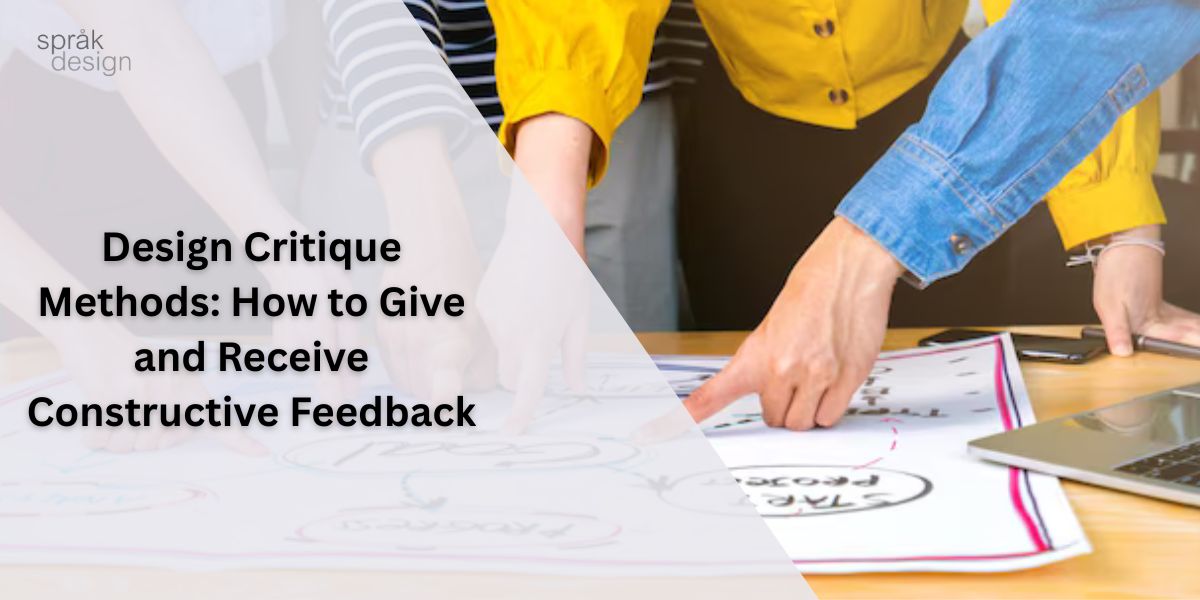Design Critique Methods: How to Give and Receive Constructive Feedback
Last Update : 28 May 2025
Introduction
In the world of design, feedback is not just a formality—it’s a vital component of the creative process. Effective design critique methods enable designers to refine their work, align with project goals, and foster collaboration within teams. By mastering the art of giving and receiving constructive feedback, designers can elevate their projects and contribute to a culture of continuous improvement.
Understanding Design Critique
What Is a Design Critique?
A design critique is a structured evaluation of a design project, aiming to assess its effectiveness in meeting user needs and business objectives. Unlike casual feedback, critiques are intentional sessions where stakeholders analyze design elements to identify strengths and areas for improvement. The goal is to enhance the design, not to criticize the designer.
Importance of Constructive Feedback
Constructive feedback is essential for growth and innovation. It helps designers understand different perspectives, uncover blind spots, and make informed decisions. Moreover, it encourages open communication and trust among team members, leading to more cohesive and effective design solutions.
Effective Design Critique Methods
1. The SBI Model: Situation-Behavior-Impact
The SBI model structures feedback by focusing on specific situations, observed behaviors, and their impacts.
Situation: Describe the context where the behavior occurred.
Behavior: Detail the observable actions without judgment.
Impact: Explain the effect of the behavior on the project or team.
This method promotes clarity and objectivity, making feedback more actionable. Designers involved in areas such as corporate brochure design, catalogue design, or packaging design company projects can especially benefit from this clear approach.
2. The “Praise-Concern-Suggest” Approach
Moving beyond the traditional “compliment sandwich,” Praise: Start with genuine appreciation for what’s working well.
Concern: Address specific issues or areas of improvement.
Suggest: Offer practical recommendations or solutions.This approach maintains positivity while directly addressing concerns, fostering a constructive dialogue.
3. The SQUACK Framework
SQUACK stands for Suggestions, Questions, User signals, Attention, Critical, and Kudos. This method categorizes feedback to ensure comprehensive coverage:Medium
Suggestions: Ideas for improvement.
Questions: Inquiries to understand design choices.
User signals: Feedback based on user behavior or data.
Attention: Elements that need more focus.
Critical: Major issues that must be addressed.
Kudos: Acknowledgment of successful elements.
By organizing feedback into these categories, teams can ensure a balanced and thorough critique.
Best Practices for Giving Feedback
Be Specific and Objective
Focus on particular elements of the design and provide clear, objective observations. Avoid vague statements like “I don’t like this” and instead specify what isn’t working and why.
Align Feedback with Goals
Ensure that your feedback relates to the project’s objectives and user needs. This alignment helps prioritize changes that will have the most significant impact.
Encourage Dialogue
Frame feedback as a conversation rather than a directive. Ask questions and invite the designer to share their perspective, fostering mutual understanding.
Best Practices for Receiving Feedback
Listen Actively
Pay close attention to the feedback without interrupting. Show that you value the input by acknowledging points and asking clarifying questions.
Separate Personal Feelings from Professional Feedback
Remember that critiques are about the work, not you as a person. Maintain a professional demeanor and use the feedback as a tool for growth.
Reflect and Apply
Take time to consider the feedback and determine how to incorporate it effectively. Not all suggestions need to be implemented, but thoughtful reflection ensures that valuable insights are not overlooked.
Implementing Structured Critique Sessions
Set Clear Objectives
Before the session, define what aspects of the design are being evaluated. This focus helps participants provide relevant and targeted feedback.
Create a Safe Environment
Encourage openness and respect during critiques. Establish ground rules that promote constructive criticism and discourage personal attacks.
Document Feedback
Keep a record of the feedback provided during the session. This documentation aids in tracking changes and ensures that valuable insights are not lost.
Conclusion
Mastering design critique methods is essential for any design team aiming to produce high-quality work. By giving and receiving feedback effectively, teams can foster a collaborative environment that values continuous improvement.
Effective design critiques not only improve the final output but also enhance team communication, build trust, and promote creative growth. As design challenges evolve, a structured feedback process ensures that teams remain aligned, adaptive, and user-focused.

